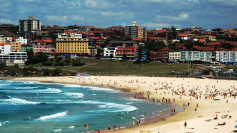Tradition has been pushed back by the fast-paced technological drive but some provinces and cities around the world continue to exploit rich culture in business.
St. Petersburg
Russia's St. Petersburg has been a popular tourist destination and, in this year's World Travel Awards, the cultural capital of Russia won the world's leading cultural city destination award.
Aside from temples and museums, St. Petersburg is recognized for its art exhibitions at the Hermitage. While the city has transformed there are still many businesses that integrate local culture in their products or services.
When the electronic visa was introduced for St. Petersburg the influx of visitors ballooned in 2019 - with the city preparing for a comeback post-pandemic.
Andong City
Nestled on South Korea's Nakdong River, Andong City is famous for its open-air heritage museums. It is also an agricultural center.
Pre-COVID, Andong City welcomed up to 1 million visitors a year with its mask festival attracting around 20 countries.
The city also has its Hahoe folk village - listed by the government and USECO as a World Heritage site. The city promotes studies of the Joseon Dynasty.
Andong is popular for its traditional attire - like the hanbok. Visitors can rent or buy it for festivals. Sales of hanbok run throughout the year, helping the city's economic growth.
Nan
The town of Nan in northern Thailand is in the border with Laos. Despite the changes in society and technology the town preserved its traditions.
Among products that are still popular are silks and handwoven fabrics. Unlike countries that adopted the use of sewing machines, Nan business owners still utilize traditional weaving techniques.
Weavers in Nan take months to produce a few fabrics. Some handwoven sarongs are believed to sell for over 10,000 baht (approximately $331).
Government agency Dasta has been helping Nan weavers get good prices for products that take months to complete. Dasta helps small-business owners ensure their hard work and identity is reflected in their product prices.
Mani, Yucatan
The Mexico state of Yucatan is known for its Mayan ruins. In October, the state reported two years of back-to-back growth - even through COVID-19.
Visitor numbers did fall but during the first two months of 2020 there was an increase of 9.1% in arrivals compared with the same period the previous year.
Mani, in particular, is a crown jewel for Yucatan owing to its artisans that create hand-embroidered garments and fabrics.
The Mayan buildings in Mani are also a big attraction - with sustainable tourism being one of the projects in the city.






